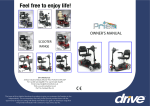Download User Manual - Amazon Web Services
Transcript
www.drivemedical.co.uk MULTEGO Instruction Booklet Table of Contents Introduction.........................................................................1 Important Precautions..........................................................2 Electromagnetic Interference and Warnings..........................3 Identification Of Parts..........................................................5 Operating Your Power Chair.....................................................6 Disassembling Your Power Chair.........................................15 Safe Driving Techniques.....................................................17 Batteries and Charging.......................................................19 Tire....................................................................................20 Maintenance and Cleaning..................................................21 Troubleshooting..................................................................22 Technical Specification.......................................................24 Issue 1 MULTEGO Instruction Booklet INTR ODUC TION Thank you and congratulations on purchasing your new Drive Medical Power Chair. We pride ourselves on providing safe and comfortable products. Our goal is to ensure your complete satisfaction. We sincerely hope you enjoy your Drive Medical Power Chair. Please read and observe all warnings and instructions provided in Instruction Booklet before you operate with various functions of this scooter. Also, please retain this booklet for future reference. If you have any question, you can contact : or your local dealer: Information of European Representative : EMERGO EUROPE Molenstraat 15 2513 BH, The Hague The Netherlands Limitation In Transporting And Travelling: 1.When transporting power chair, please ensure the product is not scratched or damaged. 2.If a long trip is planned, please fully charge the batteries before use to prevent low voltage during the trip. All the contents in this manual including pictures, photo illustrations and text are all patented and registered. (If any details in the manual are going to be changed or added, Drive Medical will not notify previous owners of the modification.) 1 Issue 1 MULTEGO Instruction Booklet IMPORTANT PRECAUTIONS Safety is the main consideration when practicing with your chair. It is required that you read and comprehend all the operating and safety instructions discussed in this manual. And ensure your chair is correctly fitted and adjusted by your dealer or the prescribing healthcare professional. Make sure to engage the wheel locks before entering or leaving the chair. The wheel locks are designed to prevent movement of the chair. It is preferable to ensure the front castors are in the forward position before transferring in to or out of the chair. With the castors in the forward position the wheel base of the chair is increased and therefore, offers more stability. DO NOT move forward in the seat while leaning forward out of the chair. If an object is to be picked up from the floor, drive past it, then reverse so the front castors are in the forward position. This gives the chair its greatest stability. To maintain lateral stability do not reach further than the length of your arm. DO NOT lean out of the chair as this could cause instability. When transferring, DO NOT stand on the leg rests. Depending on the style of leg rests either swing them away or fold them up before transferring. When approaching a ramp, be sure of your own ability and your limitations in terms of strength and endurance. Before attempting a ramp the following basic safety rules should be considered: 1. 2. 3. 4. Surface of the ramp: Is it too slippery? Degree of incline: Is it too steep to attempt alone? Length of ramp: Is it too long for your endurance? Obstacles: Are there any obstacles on the ramp that would necessitate assistance? Be very careful when going up or down steep inclines If it becomes necessary to stop when going up an incline, special care must be taken to avoid abrupt or sudden forward movement. During continuous forward movements, the chair is capable of falling backwards. Always keep the chair under control when going down a ramp or incline. Speed should be controlled at all times. The user in the power chair and a kerb is encountered, caution should be taken to prevent the user being thrown forward: Do not try to climb a kerb by driving up it. Have a helper move the chair for you following the instructions below. 1. With both motors disengaged, go down the kerb, rear wheels first; making sure that the user is square to the kerb so that the rear wheels go down together. 2. To go up a kerb forward, verify both front wheels are up together. This must be accomplished with the motors disengaged. Also try to avoid going up multiple steps and using escalators. Use the elevator instead. Please be aware that any adjustments on the power chair may affect the handling and performance. 2 Issue 1 MULTEGO Instruction Booklet ELECTROMAGNETIC INTERFERENCE AND WARNINGS CAUTION: It is very important that you read this information regarding the possible effects of Electromagnetic Interference on your power chair. Powered wheelchairs and motorized scooters may be susceptible to electromagnetic interference (EMI), which is interfering electromagnetic energy (EM) emitted from sources such as radio stations, TV stations, amateur radio (HAM) transmitters, two-way radios, and cellular phones. The interference (from radio wave sources) can cause the power chair to release its brakes, move by itself, or move in unintended directions. It can also permanently damage the power chair control system. The intensity of the interfering EM energy can be measured in volts per meter (V/m). Each power chair can resist EMI up to a certain intensity. This is called its "immunity level." The higher the immunity level, the greater the protection will be. At this time, current technology is capable of achieving at least a 20 V/m immunity level, which would provide useful protection from the more common sources of radiated EMI. The immunity level of this product is 20 V/m. There are a number of sources of relatively intense electromagnetic fields in the everyday environment. Some of these sources are obvious and easy to avoid. Others are not apparent and exposure is unavoidable. However, we believe that by following the warnings listed below, your risk to EMI will be minimized. Electromagnetic Interference and Warnings: The sources of radiated EMI can be broadly classified into three types: 1.Hand-held portable transceivers (transmitters-receivers) with the antenna mounted directly on the transmitting unit. Examples include: citizens band (CB) radios, "walkie talkie," security, fire, and police transceivers, cellular telephones, and other personal communication devices. Some cellular telephones and similar devices transmit signals while they are ON, even when not being used. 2.Medium-range mobile transceivers, such as those used in police cars, fire trucks, ambulances, and taxis. These usually have the antenna mounted on the outside of the vehicle. 3 Issue 1 MULTEGO Instruction Booklet 3.Long-range transmitters and transceivers such as commercial broadcast transmitters (radio and TV broadcast antenna towers) and amateur (HAM) radios. Other types of hand-held devices, such as cordless phones, laptop computers, AM/FM radios, TV sets, CD players, and cassette players, and small appliances, such as electric shavers and hair dryers, so far as we know, are not likely to cause EMI problems to your power chair. Power Chair Electromagnetic Interference: Because EM energy rapidly becomes more intense as one moves closer to the transmitting antenna (source), the EM fields from hand-held radio wave sources (transceivers) are of special concern. It is possible to unintentionally bring high levels of EM energy very close to the power chair control system while using these devices. This can affect power chair movement and braking. Therefore, the warnings listed below are recommended to prevent possible interference with the control system of the power chair. Electromagnetic Interference and Warnings: Warnings Electromagnetic interference (EMI) from sources such as radio and TV stations, amateur radio (HAM) transmitters, two-way radios, and cellular phones can affect the power chair. Following the warnings listed below should reduce the chance of unintended brake release or power chair movement, which could result in serious injury. 1.Do not operate hand-held transceivers (transmitters-receivers), such as citizens band (CB) radios, or turn ON personal communication devices, such as cellular phones, while the power chair is turned ON; 2.Be aware of nearby transmitters, such as radio or TV stations, and try to avoid coming close to them; 3.If unintended movement or brake release occurs, turn the power chair OFF as soon as it is safe; 4.Be aware that adding accessories or components, or modifying the power chair, may make it more susceptible to EMI; and 5.Report all incidents of unintended movement or brake release to the distributor listed on the inside front cover of this manual. Note whether there is a source of EMI nearby. Important Information 1.20 volts per meter V/m is a generally achievable and useful immunity level against EMI (as of May 1994). The higher the level, the greater the protection. 2.The immunity level of this product is 20 V/m. 4 Issue 1 MULTEGO Instruction Booklet IDENTIFICATION OF PARTS Before attempting to drive this power chair on your own, it is important that you familiarize yourself with the controls and how they operate. Handlebar Super Responsive Digital Joystick Controller Joystick bracket extendable Seat depth/Width / incline adjustable Footrest Fixation Pin Width/Height Armrests Adjustable Fiber Glass Reinforced Nylon Leg Rests Seat Belt Figure 1 - MULTEGO Power Chair Front View Self Diagnostic Warning Lights & Battery Gauge Support Brace Speed Control Button Backrest width/ incline/height adjustable Direction Control Knob Power On/Off Button Free Wheel Lever Anti-Tip Wheels Horn Figure 2 - MULTEGO Joystick Figure 3 - MULTEGO Rear View 5 I Issue 1 MULTEGO Instruction Booklet OPERATION YOUR POWER CHAIR Joystick 1.By press On/Off Switch (A), Battery Level Indicator (B) will light up. 2.Battery Level Indicator (B) indicates power capacity. (A) (B) 3.Speed Control Button (C), (D): (C) •Accelerate speed by pressing button (C) (D) •Decelerate speed by pressing button (D). (F) 4. Horn (E): Press it when necessary. 5.Directional movement is attained by controlling the joystick (F) •Forwards : Move power chair forwards. Figure 4 •Backwards : Move power chair backwards. •Left : Move power chair left •Right : Move power chair right (E) (G) (G1) Figure 5 Figure 6 Joystick Position Adjustment By release Joystick Bracket Adjustment Screw to adjust Joystick between (G) to (G1) a required position. (See Fig 6) To prevent any damages, be aware of the wire's length when adjusting. Option : Swing-Away Joystick Bracket Figure 7 6 Issue 1 MULTEGO Instruction Booklet Armrest Height Adjustment 1.Use tool (I), adjust armrest height to the required hole's position; 2.Aim for the hole's position to tighten Screw (I). (H) (I) Figure 8 Armrest's Width Adjustment 1.Release both side's width fixation screws (J). 2.Adjust to comfortable width. 3.Tighten both side's width fixation screws (J). (J) Figure 9 To prevent inappropriate attachment, 3 functions adjustment reference as below Comparison Hole Position when Seat Depth at 16" Hole Position when Seat Depth at 17" Hole Position when Seat Depth at 18" Seat Depth Adjustment 1st & 2nd (16") 2nd & 3rd (17") 3rd & 4th hole (18") Standard 1st hole Standard 2nd hole Forbidden 1st hole Standard 3rd hole Forbidden 1st ,2nd hole Seat Incline Adjustment Footrest Adjustment Standard 2nd & 3rd hole Standard 1st & 2nd hole Standard 1st & 2nd hole Forbidden 1st & 2nd hole Seat Depth Adjustment (K) 1.Take off 4pcs of both side's depth fixation screws (K) underneath the seat. 2.Adjust to required depth hole's position. 3.Aim 4 screws at hole's position to tighten. 1 2 3 4 Figure 10 7 Issue 1 MULTEGO Instruction Booklet Seat Incline Adjustment 1.Release knob (L). 2.Lift seat up to adjust to required hole's position, then tighten with knob (L). (L) 1 2 3 4 5 Figure 11 Knob (L) must be tightened properly to prevent any accident. For safety concern, do not driving when seat is in incline condition. Footrest Adjustment 1.Take off two Footrest Fixation Screws (M) 2.Adjust to required hole's position, aim at hole's position and tighten screws. (M) •Careful not to interfere with front wheel when adjusting. 1 2 3 4 Figure 12 Seat Width Adjustment 1.Take off seat pad (N1) 2.Take off 4pcs of width adjustment screw (N) at front and rear of seat. 3.Adjust side's bracket (O1) (O2) to required width hole's position. 4.Aim 4pcs of screw at hole's position to tighten. front (N1) (O1) (N) (O2) rear Figure 13 For ease adjustment, apply equal force on both sides. 8 Issue 1 MULTEGO Instruction Booklet Footrests Height Adjustment 1.Take off both side's height fixation screws (P). 2.Adjust to required position. 3.Aim for the required hole's position to tighten height fixation screw. (P) •Careful not to interfere with front wheel when adjusting Figure 14 Seat Belt Usage 1.Prior driving fasten the seat belt as the picture illustrates (Q) (Q1). 2.Seat Belt can be unfastened by pressing down the red button (Q2). (Q) Freewheel Levers (Q1) (Q2) 1.For your convenience, the chair is equipped with two freewheel levers. These levers allow you to disengage the drive motors and maneuver the chair manually when encountered malfunction or stop. 2.In traveling, set the two metallic levers (R) to the Drive position. Figure 15 DO NOT use your chair while the drive are disengaged unless you are in the presence of an attendant! DO NOT disengage the drive motors when your chair is on an incline. The chair could roll down on its own, causing injury! Backrest Height Adjustment 1.Release vel-cro (T1) 2.Loosen and taken off side's screw (S) from backrest (T) 3.Adjust backrest (T) to required height position. 4.Aim for hole's position then tighten with side's screw, afterwards attach backrest with vel-cro. (R) Figure 16 (T) (S) (T1) (T1) Figure 17 For ease adjustment, apply equal force on both sides. 9 Issue 1 MULTEGO Instruction Booklet Backrest Angle Adjustment By pulling the fixation vel-cro backwards to disengage the pins from the holes, and adjust angle to a comfortable position, then release fixation vel-cro to engage to it's position. Fixation Vel-cro Figure 18 For safety concern, do not driving when seat is in incline condition Backrest's Width Adjustment 1.Take off backrest pad as illustration by release it's vel-cro. (See Fig. 19). 2.Release all backrest's vel-cro straps (See Fig. 20). 1 2 Figure 19 Figure 20 3.Release and take off two screws from support brace and lower bracket. (See Fig. 21). 4.Release both side's 4 screws from backrest's left&right fixation bracket (See Fig. 22). 3 4 Figure 21 Figure 22 10 Issue 1 MULTEGO Instruction Booklet 5.Adjust support brace to a comfortable position and reassemble by aiming for the holes then vise versa steps 3~4. (See Fig. 23). 6.Adjust vel-cro to appropriate tightness; and put back backrest pad. 5 Figure 23 Option : Kerb Climber Assembly 1.Take off both side's pins from climber comp to disassemble climber holder. (See Fig. 24). 1 Pin Figure 24 Climber Holder 2.Aim climber holder onto the frame and tighten them with two screws. (See Fig. 25). 3.Assemble climber as arrows indicate by aim it to both side's holder. (See Fig. 26). 2A 2B 3 Figure 25 Figure 26 11 Issue 1 MULTEGO Instruction Booklet 4.According to drawing, aim climber bracket onto climber holder, and insert pins into hole position. (See Fig. 27). 5.Completed. (See Fig. 28). 4 5 Figure 27 Figure 28 Option : Lighting Assembly 1.Screw must aim at the hole. (See Fig. 30). 2.Tighten two bolts.(no bolts, if with climber). (See Fig. 31). 3.Using tool to tighten screws and bolts. (See Fig. 32). Figure 29 1 2 3 Figure 30 Figure 31 Figure 32 Same assembly steps for both sides, by repeat 1~3 steps. 12 Issue 1 MULTEGO Instruction Booklet 4.Click rear lights onto frame. (See Fig. 34). 5.Aim and tighten screws and bolts. (See Fig. 35). 6.Using tool to tighten screws and bolts. (See Fig. 36). Same assembly steps for both sides, by repeat 1~3 steps. Figure 33 4 5 6 Figure 34 Figure 35 Figure 36 7.Install lighting controller's bracket. (See Fig. 37). 8.By using knob to fix controller's bracket and stick two cable clips to fix lighting controller's cable. (See Fig. 38). 9.Connect right lighting cable A~D onto a~d terminals. (See Fig. 39). 10.Same procedure for left lighting cable E~H onto e~h terminals. (See Fig. 40). 7 8 Figure 37 9 Figure 38 10 Battery terminal A (a) Right hand side rear light terminal C (c) (b) Right hand side front light terminal B Right hand side rear light terminal D Figure 39 Lighting controller terminal E (e) (f) Left hand side front light terminal F Left hand side front light terminal H (h) Left hand side front light terminal G (g) Figure 40 (d) 13 Issue 1 MULTEGO Instruction Booklet 11.Coordinate and fix cables by using 8 cord clips. (See Fig. 41 & 42). 11A 11B Cord Clip Figure 41 Cord Clip Figure 42 12.Operation : (c) 1.Button (a): Power on/off switch. (e) 2.Button (b): Activate warning light 3.Button (c): Right Turn Signal 4.Button (d): Left Turn Signal (a) 5.Button (e): Front lamp (b) (d) Figure 43 Option : swing - away Footrest Figure 44 14 Issue 1 MULTEGO Instruction Booklet DISASSEMBLING YOU SCOOTER Disassemble Footrest Press pin (W) downward, then turn footrest (W1) outward and lift up to take off. Disassemble Armrest 1.Use tool to release armrest. (X) 2.For the armrest with controller, you have to detach controller's wire harness (X1) and clip (X2) first to disassemble armrest. (W) (X1) (X2) (W1) (X) Figure 45 Figure 46 Disassemble Battery 1.Turn freewheel levers outward to (D) position, to prevent any movement when disassembling. 2.Pull out the battery cover (Y) as arrow indicates direction. 3.Disconnect both battery connectors, (Z) and vel-cro (Z1). 4.Lift two batteries (A1.A2) up carefully. (Z) Figure 47 (Y) Figure 48 Figure 49 (A2) (Z1) Figure 50 (A1) Figure 51 Figure 52 15 Issue 1 MULTEGO Instruction Booklet Batteries are heavy, please be extra careful when removing them Fuse Replacement 1.Disassemble batteries according to steps 1~4. 2.Open fuse box (A3), remove fuse (A4). 3.Replace with backup fuse and close up the box. (A3) (A4) Figure 53 Figure 54 Replace with same power fuse is required. Battery connectors must be disconnected before replacing fuse (A4). 16 Issue 1 MULTEGO Instruction Booklet SAFE DRIVING TECHNIQUES Driving your Chair Before sitting on your chair, verify: 1. The chair is switched off. 2. Swing away the armrests and leg rests if appropriate. 3. The battery charger is disconnected from both the chair and the wall outlet. Once on your chair, make sure that you are comfortably positioned and that the leg rests and armrests have been adjusted to suit your needs. The position of the joystick should be within reach to eliminate hand and arm exhaustion when driving. To Begin : 1. Set the speed control of the chair to SLOW. 2. Press the Power "on / off" switch. 3. Allow two seconds to elapse before engaging the joystick. This is a safety feature to prevent sudden starts. 4. Push the joystick gently forward applying a steady even pressure. The further you push the joystick, the faster the chair will go. The chair will stop when you return the joystick to the neutral or vertical position. 5. Directional control is achieved by gently swivelling the joystick in the direction you wish to go. Pull back to reverse. 6. The controller can be programmed to give you the best feel for all driving situations and only needs a light touch to respond. In the case of an emergency, let the joystick go and the chair will come to a stop. Safe Driving 1. Never drive at a speed greater than your ability to safely control your chair. Remember that wet or loose surfaces need greater care and control. 2. Always turn the chair OFF when transferring on or off or while the chair is stationary for long periods. 3. Avoid jerky stop / start motions as this will result in excessive current draw from the batteries, increased tire wear and the rapid wearing of the gearbox and motors. 4. Keep your chair clean from sand and salt water. Indoor / Outdoor Driving When driving indoors keep the speed to a minimum to avoid the risk of collision. For outdoor driving be cautious of wet surfaces, loose sand, large curbs and potholes. A little practice will ensure you understand the capabilities of your chair and enable you to overcome the most common obstacles encountered when driving. 17 Issue 1 MULTEGO Instruction Booklet Chair Operation on surfaces that require Special Care When driving up or down ramps it is recommended that the user: 1. Visually checks to see if the angle of the slope is less than 8 degrees. 2. Checks to see that the ramp surface is roughened to prevent slippage. 3. Ensures that the ramp surface is correctly in line with the tires and is wide enough to allow the tires to pass freely along the ramp. If the ramp meets these conditions, it is recommended that the user drives the wheelchair slowly up or down the ramp, ensuring that the chair is driven in the centre of the ramp tracks. If possible, have an assistant monitor the chairs' progress, and prevent tipping of the chair by holding the push handles at the back of the seat. If the ramp does not meet these conditions, it is recommended that alternative methods for climbing and descending be found. Chair Response Should the chairs' response not be to your satisfaction, ask your dealer to adjust the program to a level at which you are comfortable. This program can be altered at anytime to either increase the response rates in line with your improved motor skills or to lower the rates to a level at which you feel comfortable and in control. Kerbs It is recommended that before the user attempts to climb or descend a curb that the user visually checks the height of the curb to ensure that it does not exceed 1" in height. If the kerb height is less than 1", the user should approach the kerb at right angles to the kerb line at a slow speed, climb or descend the kerb slowly so as to keep the chair under control. When climbing the kerb, the user may find it easier to reverse the chair up the kerb. If the kerb height is greater than 1", it is not recommended that the user climb or descend the kerb. Steep Slopes When the power wheelchair is to be operated up and down steep slopes, it is recommended that the user: 1. Visually checks to see if the angle of the slope is less than 8 degrees. 2. Checks that the slope surface is roughened to prevent slippage. If the slope meets these conditions, it is recommended that the user approach the slope at a slow speed, keeping the chair under control at all times. It may be preferable to track across the slope so as to decrease the steepness of the descent providing that the surface of the slope is wide enough and suitable to prevent slippage. 18 Issue 1 MULTEGO Instruction Booklet If the slope does not meet these conditions, it Is recommended that the user does not climb or descend the slope. BATTERIES AND CHARGING When your batteries are fully charged you should have sufficient power to give you all the mobility required in a day. It is important that you understand how your batteries and charger work. Batteries must be charged before using the power chair for the first time and are recommended to be charged up to 10 - 14 hours after each day's use. Maintain the Batteries : 1. Batteries should be charged every night in a well ventilated room. 2. DO NOT place the power wheelchair near radiators or open fireplaces while charging. 3. DO NOT smoke or permit open flames in the immediate vicinity. 4. Turn the chair controller power off before charging. 5. It is advisable that the batteries be charged for a minimum of 10 hours per night to ensure full battery storage capacity. The battery charger is an automatic current limiting device and will shut off when the batteries are fully charged. Charging the batteries : 1. Position power chair next to a standard wall outlet. 2. Connect the battery charger to the wheelchair input battery charging socket, which is located on the front of the controller. 3. Connect the battery charger to a standard wall power outlet. 4. Switch the power on. During the recharge : While the batteries are being recharged, a red light will appear on the battery charger, indicating that the power is connected and charging is in progress. At the end of the recharge cycle: 1. A green light will appear on the charger. This indicates that the batteries are fully charged and ready for use. 2. If fitted, the battery charge level indicator on the controller should also show a full charge when switched on. When do the batteries need recharging? When the batteries fall below 20% of the maximum charge level, the serles of lights on the controller will flash. 1. Do not use batteries other than the recommended type for your chair and never use a charger other than the one supplied for that purpose. 2. If the chair is not used for a long period of time arrange to have the batteries charged for at least one day (10 hours) every month, minimum. 3. Periodically, check that the battery terminals are clean and the connections are tight. Smear a thin film of petroleum jelly on the terminals to guard against corrosion. Always wash your hands after handling batteries. 19 Issue 1 MULTEGO Instruction Booklet TIRE You should inspect the tires frequently for damage, the presence of foreign bodies, unusual wear and sufficient tread depth. Tread depth should if possible not be allowed to drop below 1/16". If replacement tires are needed, please contact the nearest dealer. Front wheels : 8" Solid tires. Rear wheels : 13" Solid tires. Follow these easy steps to replace the tire: 1. Use an ratchet and socket to remove the drive wheel screw from the centre hub of the wheel. See Fig 55. 2. Pull the wheel off of the axle. 3. Separate the tire from the rim. 4. Remove the old tire and replace it with a new tire. 5. Slide the wheel back onto the shaft. 6. Install the drive wheel nut into the centre hub and verify the key is lined up with axle and wheel. Then tighten to secure it in place. Figure 55 20 Issue 1 MULTEGO Instruction Booklet MAINTENANCE AND CLEANING An electric wheelchair needs some basic attention to ensure it provides reliable service. We recommend that the user ensures that the power wheelchair is checked regularly for maintenance requirements and receives a thorough, annual maintenance check up. Annual Maintenance We recommend that the chair has at least one full service per year from an authorized dealer. This will ensure that your power chair is functioning properly and also helps prevent future complications. This should include: 1. 2. 3. 4. 5. Checking Checking Checking Checking Checking the the the the the tires. batteries and terminals. controller program for the user's needs. frame. upholstery condition. Regular Maintenance and Cleaning 1. Avoid knocking or bumping the controller, especially the joystick. 2. Avoid prolonged exposure of your power chair to extreme conditions, such as heat, cold, or moisture. 3. Keep the controller clean. 4. Check that all controller connectors are tight and secured properly. 5. Never hose off your power chair or place it in direct contact with water. 6. Keep the upholstery and frame clean by wiping with a soft cloth, particularly after driving through wet, sandy or muddy conditions. Do not use harsh abrasive materials when cleaning. Do not apply liquid cleaners or solvents directly to the control box, battery charger or any electrical connections. 7. Keep wheels free from lint, hair, sand and carpet fibres. 8. Lightly oil axle pin, wheel axles and bearings once every three months, if necessary. 9. Inspect the tires. Tread depth should not be allowed to drop below 1/16". 10. Use only recommended batteries and have batteries changed by Qualified Dealer if you have doubts about your ability to lift the components. 11. Charge batteries regularly. Make sure the charger lead plugs are engaged properly in the sockets. Do not disconnect by pulling the cord. 12. With the controller turned off, check the joystick. Make sure it is not bent or damaged and that it returns to the center when you release it. Check the rubber boot around the base of the joystick for damage. Visually inspect the boot. Do not handle or try to repair it. See your authorized dealer for any questions. 13. Visually inspect the controller harnesses. Make sure that they are not frayed, cut or have any wires exposed. See your authorized dealer if there is a problem with any of these harnesses. 14. Ensure that all parts of the controller system are securely fastened to your chair. Do not over tighten any screws. 21 Issue 1 MULTEGO Instruction Booklet TROUBLESHOOTING Flash codes indicate the nature of an abnormal condition directly from the SHARK lnformation Gauge. Without the use of any servicing tools, the condition can be simply diagnosed. Flash Code/Fault 1 Impact on scooter User Fault Description Possible stall timeout or user error. Release the joystick to neutral and try again. Try charging the batteries. 2 Battery Fault Batteries may require replacing. Check the batteries and cabling. 3 Left Motor Fault Check the left motor, connections and cabling. 4 Right Motor Fault Check the right motor, connections and cabling. 5 Left Park Brake Fault Check the left park brake, connections and cabling. 6 Right Park Brake Fault Check the right park brake, connections and cabling. 7 SHARK Remote Fault Check the SHARK Communications Bus connections and wiring. Replace the Remote. 8 SHARK Power Module Check SHARK connections and wiring. Fault Replace the Power Module. Check Battery voltage is greater than 17V. 9 Check SHARK Bus Cable. SHARK Communications Fault Replace the SHARK Power Module. Replace the SHARK Remote. 10 11 Unknown Fault Incompatible Remote Check all connections and wiring. Consult a service agent. The Remote is incompatible with the Power Module. Ensure the brand of the Power Module matches that of the Remote. 22 Issue 1 MULTEGO Instruction Booklet Other Problems: •Power chair will not move when the power is turned on: 1.Check the Battery Level Indicator on the joystick. All the LED lights should be on. 2.Check the Self-Diagnostic Warning Light. It should be steady. If it is flashing, see the chart on page 22 for the problem identification. 3.Check all electrical connections to be sure they are tight. 4.Verify the batteries are connected correctly. Refer to "Disassemble Batteries" on page 15 and vice versa the steps. 5.If none of these suggestions correct the problem, contact your authorized dealer. •If charging your power chair over 14 hours and the light on the charger does not change to green, then contact your authorized dealer. Please note that your power chair is equipped with a controller that constantly checks the drive system for a safe and enjoyable ride. If an error occurs, the Battery Level Indicator will provide you an indication of the problem by way of flashing lights. 23 Issue 1 MULTEGO Instruction Booklet TECHNICAL SPECIFICATION Overall Length 1040 mm / 41" Overall Width 580 mm / 23" Overall Height 920 mm / 36" Wheels: Front 200 mm / 8" Wheels: Middle N/A Wheels: Rear 320 mm / 13" Weight w/ Batteries 74 kg / 163 lbs Max. Speed 6.4 kmph / 4 mph 136 kg / 300 lbs Max. Weight Capacity 100 mm / 4" Ground Clearance 8 degree Maximum Safe Slope Kerb Climbing 30 mm / 1" Turning Radius 920 mm / 36" Electro-Mechanical Brake Seat Width 360 ~ 510 mm / 14" ~ 20" Seat Depth 410 ~ 460 mm / 16" ~ 18" Armrest Height 210 ~ 255 mm / 8 1/4" ~ 10" O O O Seat Back Angle 98 or 108 or 118 Seat Back Height 410 ~ 510 mm / 16" ~ 20" Drive Train 2-Motor Rear-Wheel Drive Weight Of Battery 24 kg / 52 lbs Motor Size 420W 3700 r.p.m Travel Range 16 km / 10 Miles Battery (2) 12V. 36Ah (50Ah Option) Battery Charger 5A Off Board Electronics Dynamic 50A Seat Type Padded, Breathable Ballistic Nylon Back Rest *Subject to change without notice. 24 Issue 1 Warranty Information Drive Medical Multego Powerchairs are warranted for 12months (24 months frame) from the date of purchase on side frames and crossbars. (NB Batteries are warranted for 12 months.) » » » » » During the warranty period any parts that have become defective due to faulty workmanship or material will be repaired or replaced without charge by Drive Medical supplier/dealer The warranty excludes tyres, punctures and items that become worn due to normal wear and tear such as upholstery and armrest pads The warranty excludes all items that have been subject to undue wear and tear and misuse Unauthorised changes or modifications will forfeit your warranty If a defect or fault is discovered, the Drive Medical supplier/dealer from whom the Wheelchair was purchased should be notified immediately Limitation of Liability The warranty does not extend to the consequential costs resulting from fault clearance, in particular freight and travel costs, loss of earnings, expenses, etc. The manufacturer will not accept responsibility for any damage or injury caused by misuse or non-observance of the instructions set out in this user manual. Dealer Stamp Drive Medical Limited Ainleys Industrial Estate, Elland West Yorkshire, HX5 9JP Tel: +44 (0) 1422 314 488 Fax: +44 (0) 1422 314 489 Email: [email protected] www.drivemedical.co.uk






























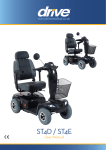
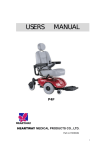

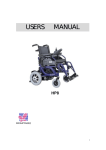
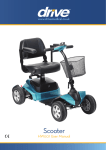
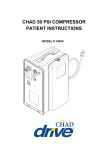
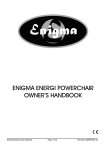
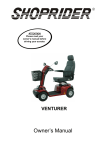

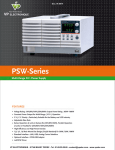
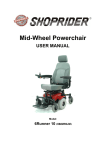
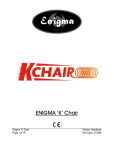
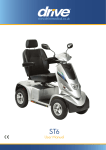
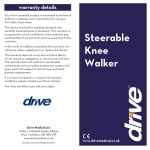

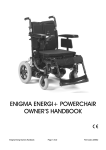

![588-589-00a [Converted]](http://vs1.manualzilla.com/store/data/005638396_1-02d08bb06dde3fa2099be559e669b8e9-150x150.png)
